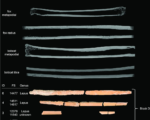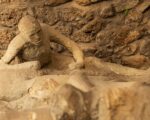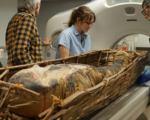Pompeii DNA Study Unveils Unexpected Ancestry and Challenges Traditional Views on Family and Gender Roles

A groundbreaking DNA study conducted by researchers from the University of Florence, Harvard University, and the Max Planck Institute for Evolutionary Anthropology has revealed surprising new insights into the lives of Pompeii’s ancient population. The research, which challenges long-held assumptions about the social and familial structures of the city’s residents, revises historical perspectives based on previous visual evidence and physical remains. By extracting and analyzing DNA from 14 restored skeletal remains, the study has illuminated a much more complex social landscape than previously thought.
The eruption of Mount Vesuvius in 79 AD buried Pompeii under a thick layer of ash, preserving its population in an almost frozen moment in time. Prior to this DNA study, interpretations of Pompeii’s social dynamics were largely based on skeletal positions, grave goods, and other material artifacts like jewelry. These items suggested clear distinctions between gender roles and family structures. However, the genetic analysis uncovered discrepancies in these assumptions, revealing that kinship and gender roles in Pompeii may have been far more diverse and fluid than previously understood.
Professor David Caramelli, from the University of Florence’s Department of Anthropology, noted that the DNA evidence has provided surprising variations in family ties and gender, offering a richer, more nuanced view of Pompeii’s inhabitants. For instance, what was once thought to be a family group, such as a parent-child pair, was actually made up of unrelated individuals. These findings suggest that the social and familial bonds in Pompeii were not necessarily as rigid or traditional as once believed, and that personal relationships may have been more complex.
Further analysis, including the famous casts from the House of the Golden Bracelet, revealed that several individuals previously thought to be closely related were, in fact, not genetically connected at all. In addition, the study challenged traditional gender assumptions, with certain artifacts, once believed to be linked exclusively to women, being found alongside male remains. These revelations offer a new perspective on Pompeii, demonstrating a society that was far more diverse in its family structures and gender identities than historical records had suggested.





















